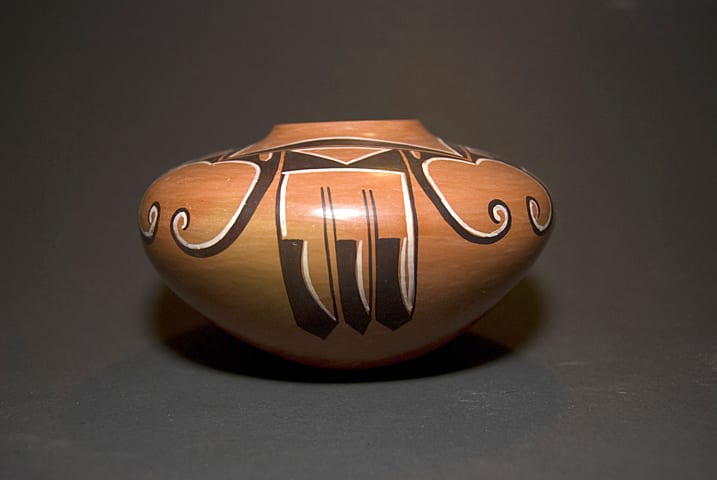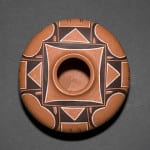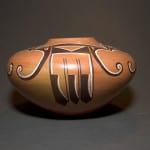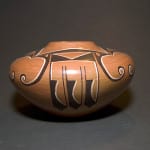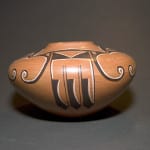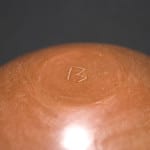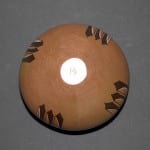The clay body is made of a hard-to-work yellow clay called sikyatska, which, when fired, gives the pot an unusual orange-brown color. The pot has an extremely smooth finish and the black “eagle-feather” design is outlined in white (kaolin) clay.
The pot was modeled after a circa 1910-1915 pot by Nampeyo, which is illustrated in the Blair book on Nampeyo (1999:XVI, fig C), although Rachel simplifies the Nampeyo design by using triangles above the linear tail-feather elements. When viewed from above, these triangles from a square that is superimposed but shifted 45 degrees from the squared design that frames the pot’s mouth; the contrast gives the design both motion and tension. Clearly, Rachel has been able to recreate the spaciousness, lightness, and energy seen in her great grandmother’s designs. (See 2005-16, in particular.)
The collection has more pots by Rachel than by any other artist. (For other pots in the collection by Rachel, see the Artist List.) The range of styles among Rachel’s pots over time documents a creative and evolving talent.

